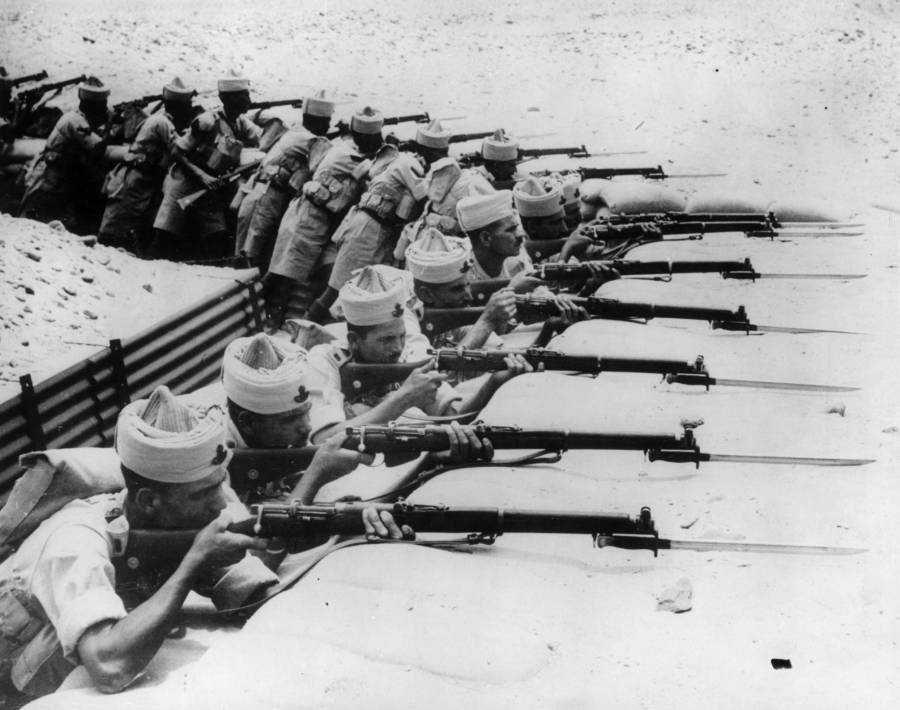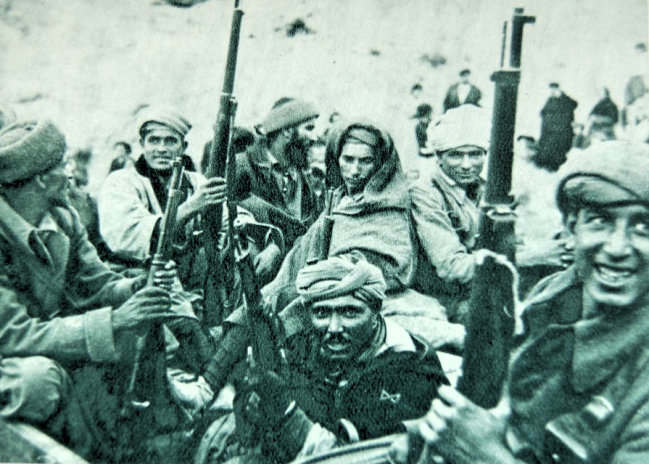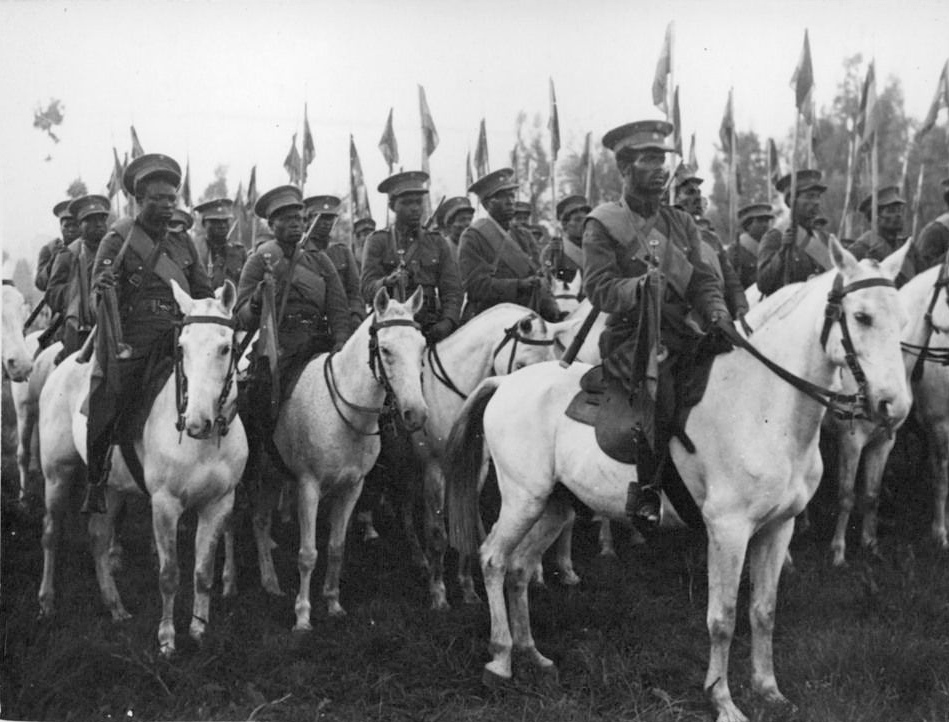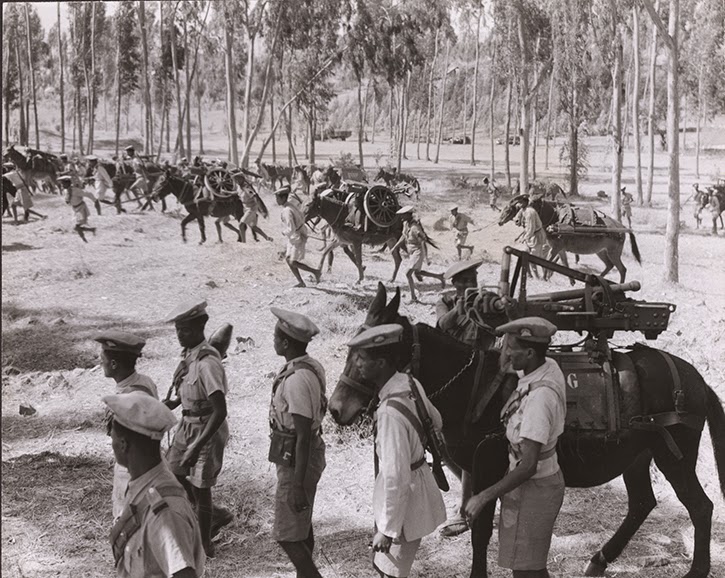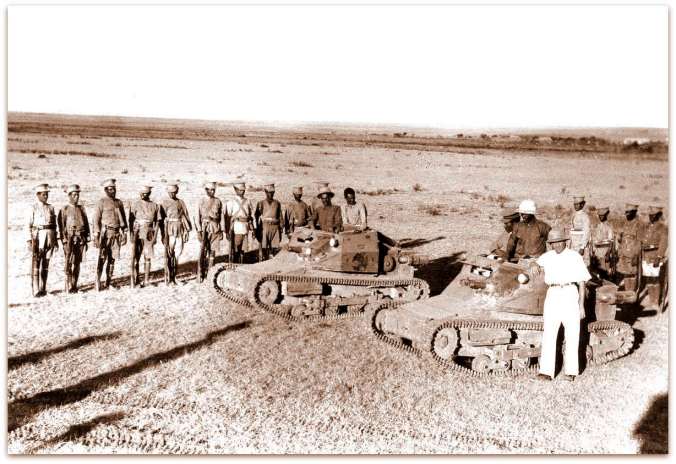When That Day Comes
Excerpt from A History of African Radicalism by Paul Gilroy
Ethiopia's collapse in '36 had left Liberia and Egypt as the sole independent nations of Africa and it was at that point that the Ethiopian example was made an important case for what happened to countries who failed to modernize in the face of European colonialism. It was with the example of Italian-occupied Ethiopia that the respective governments of Liberia and Egypt pursued extensive programs of armament that was intended to support their armed forces to defend against what was increasingly perceived to be rampant European imperialism. In Egypt, there still remained the vestiges of the continued British occupation which remained a sore reminder and Ahmad Husayn's government took steps to rectify this by placing pressure on London, playing up fears of Mussolini going mad and attacking the Suez Canal. The increasing presence of Italian soldiers in colonial Libya and occupied Ethiopia inadvertently reinforced this, especially with Mussolini's attempts to assure the British government that he had little intention to interfere in an affair that did not concern it. Although the pro-Italy Young Egypt Party maintained party-to-party links with its Italian counterpart, Husayn was aware of the Italians' designs on Egypt itself and this reinforced a widespread notion that Egyptian rearmament was necessary for the maintenance of Egypt's embryonic independence.
Meanwhile, in Liberia, Marcus Garvey had overseen the transformation of the Liberian Frontier Force from an ill-trained and ill-equipped militia into a respectable fighting force that actually outmatched the units defending the nearby British and French colonies. Appalled at the state of the Liberian military when he emigrated in 1927, Garvey had set to work expanding the existing Universal African Corps with assistance from the many African-American veterans of the Great War [1] into something rivaling the LFF itself and started integrating the former into the latter when he came to power in '31. These veterans proved to be invaluable in the service of the Garveyite state, properly reorganizing and reforming the Liberian Frontier Force in tandem with the UAC leadership and competent Liberian officers. In addition to the LFF's reform and expansion, Garvey personally oversaw the expansion of the Negroes Factories Corporation into the arms manufacturing and standardized the LFF's equipment, starting with making the 1903 Springfield rifle the standard rifle of the Liberian soldier. Although successful in the regular production of small arms to thoroughly equip the Liberian Frontier Force, the LFF was noticeably lacking in heavy artillery and armored units that the NFC was struggling to produce.
By 1938, the Liberian Frontier Force had grown to 9,772 men with many of them having served in Ethiopia or Haiti from 1935-38 and was considered a formidable fighting force capable of successfully taking on the British and French garrisons stationed in the colonies nearby, Charles Young [2] himself praising Garvey for the reform of the LFF. Despite being considerably slowed by Washington's restrictions, Blacks that had joined the Universal Negro Improvement Association continued to be recruited in the Liberian Program and continued immigrating to Liberia [3] which had effectively replaced Ethiopia in the Black Diaspora by the late 1930s. To a lesser extent, this was also happening with Blacks coming from the Caribbean (mostly Jamaicans) and South America. However, the Liberian Frontier Force now possessed a steady influx of able-bodied manpower that would be the basis of the African Liberation campaign that many of the UNIA's dogmatic officials continued to believe in, even as Garvey toned down his rhetoric. Interestingly, the Garveyite government took cues from Italy's demographic colonization of its Libyan colony under Italo Balbo and although it avoided much of the violence that had occurred under Graziani, Monrovia was willing to crack down particularly harshly on the historically troublesome ethnic groups like the Kru and expropriate them from their land in favor of Black settlers from the Americas.
Speaking of emulating Italian colonization, Marcus Garvey had done much to denounce it and side with the pro-Ethiopia sentiment reverberating through Africa but he continuing praising the Fascist powers that were Mussolini's Italy and Hitler's Germany even in the Second World War. His infamous quote, "We were the first Fascists, when we had 100,000 disciplined men, and were training children, Mussolini was still an unknown. Mussolini copied our Fascism." in 1937 seems proof of this and has been used by Garvey's critics to denounce him as little else than a "Brown Fascist." This could also be seen in other quotes made at the time and Garvey's open admiration of Hitler [4] that represented the disturbing growth of pro-National Socialist trend not just in Liberia but in the non-European world too. An example of this is Husayn's moves toward establishing party-to-party relations with the NSDAP in March 1938, at the height of Italo-German tensions over the German annexation of Austria, and praised both Hitler's support for Nationalist factions and General Franco's many accommodations particularly for his Moroccan soldiers. This may have been done to redirect Italian ambitions in North Africa to Central Europe where Mussolini saw Austria in the context of a grander New Roman Empire project. In the meantime of Italy's distractions in Spain, Austria and Ethiopia, Husayn stuck to Young Egypt's promises and begun vigorously expanding the Egyptian state's role in the economy to counteract British predominance and support Egyptian militarization.
Egyptian troops on drill in Sudan, March 1938.
Pro-Nazi sentiment could also be felt in the UNIA where some, like Carlos Cooks and William Tubman, concluded that another European War was inevitable and Germany would eventually emerge victorious in a long, drawn-out war of attrition that would see the Third Reich control most of Europe, sans the USSR. In the process, West European colonial empires would disintegrate with their homelands' focus on defense of its European frontiers and a Continent-wide uprising that would see Black Africans liberate themselves from the shackles of decades of brutal imperialism. It was only natural that the Germans would seek the cooperation of Africa's independent governments that would expel the Western Allies from Africa entirely and further cripple them by cutting off their access to their precious colonies. In coordination with Egypt, the British, French and Italian armies would be driven across the Mediterranean and destroyed by German forces, effectively ushering in German control over Europe. The Germans, tied down in pacification and integration of its new territories, would be too busy to subvert African governments while strengthening themselves, forming into a Pan-African Bloc to stave off the plans of organizations like the Reich Colonial League [5] to reclaim former colonies. Thus, the world would be divided into several spheres: German-controlled Europe, Japanese-dominated Asia and Liberian-led Africa.
The Liberian High Command was not as eager to embrace these proposals, Charles Young pointing out that Liberian forces might be able to successfully annex Sierra Leone, in addition to parts of the Gold Coast and Guinea but nothing else. Although the UNIA possessed an extensive network in West Africa, there was no guaranteeing that all or even most West Africans would rise up in favor of the Liberian "liberation," in which the Garveyites had done a fine job influencing West African nationalism [6] and potentially encouraged anti-Liberian nationalism in the process. Not to mention that the chapters in central and southern Africa were being cracked down upon with vigor in response to the wave of anti-colonialism and nationalism in Africa, the ones in British and French West African colonies doing better under liberal regimes. The LFF High Command also pointed out that the Liberian military was sorely lacking in heavy artillery and armor to support the well-trained and well-armed light infantry. This all meant although the LFF had surely improved and might've been capable of knocking out their European counterparts, it wouldn't be able to carry out much other than blitzkrieg and static defense when faced with a massive counteroffensive from the combined might of the Anglo-French empires.
Despite the LFF's protests, Garvey ordered that his commanders outline a plan but acceded to the protests that the LFF was incapable of conquering all of West Africa and focused on places where the Garveyite networks were the strongest and the LFF could count on local support. This was followed by the gradual dissemination of arms in that colony, in addition to Guinea and Nigeria where Garveyite cadres showed a willingness in favor of Liberian "intervention and liberation," as Liberian agents begun to join the ranks of the colonial garrisons. The escalation of the Spanish Civil War lends concrete evidence to the pro-Nazis, especially with Franco's push via Morocco and the Italo-German intervention against the Republicans in July 1936. Moscow's support for the Republican government only reinforces this further and the narrative of another European war on the horizon attracts more to their side as Europe seems ready to burst at the seams over this new conflict. Garvey gave the order to partly mobilize the Universal African Corps when the International Brigades were organized under Republican command in September 1936, the Nationalists threatening to overrun the Republican militias with the vastly superior Army of Africa's regulars.
Moroccan soldiers around Madrid, July 1938.
Excerpt from Prevail: The Inspiring Story of Ethiopia's Victory over Mussolini's Invasion, 1935-1945 by Jeff Pearce
Much of 1938 was spent rebuilding the units mauled or lost in the February Offensives, mobilizing and in isolation of Haile Selassie's Provisional Government in Tokyo. Imru was content to oversee the small-unit attacks that had become the norm but Lorenzo Taezaz had pointed out that not just the Emperor-in-exile was demanding larger-scale attacks but the restive population was too, desiring revenge. In the Ogaden and Sidamo, Nasibu Emmanuel managed to exploit the anger of local Muslims at the destruction of Harar's mosques and amass a calvary force of southern nomads. Under Imru's orders, Nasibu begun attacking Italian forces stationed in the Ogaden, personally leading a series of coordinated attacks by Somali calvarymen against the Italian-controlled towns in the east and struck Kelafo, the center of Sultan Olol Diinle's collaborationist administration. Diinle was killed by an errant bullet in the midst of the calvary charge and Kelafo was placed under Patriotic control within a day, Nasibu having kicked out the Somali levies. They soon attract the attention of the Somali Askaris positioned close to the former border with Italy's Somaliland colony located at Mustahil and they moved to retake the town, only to be wiped out in a pre-emptive strike as Nasibu withdrew into the surrounding countryside.
Oromo and Somali calvary in Bale, June 1938.
Although the town soon fell back into Italian hands, the loss of such a prominent collaborator dealt a heavy blow to the Italian colonial administration and its ties with the local Somalis. After all, Harar was to be considered Islam's fourth holiest city by them and the destruction it was subject to didn't present a positive image to them, already having isolated the Hararis. It was only through Diinle that the Somalis of the area had remained somewhat amicable to the Italian presence even when Italian soldiers rampaged in Jijiga and Dire Dawa but the Patriots' influence was growing by the day. Imru himself was reported to have made promises of delivering religious freedom and autonomy to the Ogadeni Somalis, noting that these Catholics had already betrayed Ethiopia's Orthodox Christians and slaughtered their fellow Muslims in that Libyan colony under the now-dead Butcher of Fezzan. Contrary to Italian propaganda, the Orthodox Christians had been willing to treat their Muslim brothers as fellow Ethiopians and Imru urged them to rise up against the "accursed Catholic infidels," daring to refer to play on the historical enmity between the Catholic Portuguese and Muslim Adal Sultanate. Who was to say that they wouldn't be next?
Besides the increasing anti-Italian feeling in the Muslim provinces and Nasibu's attacks, the Italian colonial administration was being hampered by the mounting losses that Italian forces were suffering and even more so by Mussolini's decision to commit Italian "volunteers" to Franco's Nationalists in July 1936. This meant that even with the rampant assassinations of officers and even generals like Guglielmo Nasi in the talks of March 1939 [7] and need for skilled manpower, Italy was actually withdrawing entire divisions from occupied Ethiopia and replacing them with conscripts from Italy proper or more colonial soldiers. They weren't exactly successful in achieving their colonization aims, having failed to settle the 35,000 Italians that had been encouraged to go to Ethiopia and forcing them to remain within the cities where Rome had planned they would come to replace the native Ethiopians in their grand redesign of Addis Ababa. The fertile lands that were promised to them were also spread across the Highlands and southern provinces, of which both were predominantly under Patriotic control. Not to mention the growing financial burdens of maintaining their presence in Ethiopia while simultaneously spending millions on the development of their colonial empire [8] and on supplying the Nationalists in Spain with adequate equipment that were showing just how worth attempting to make Ethiopia an Italian colony was.
Worse was growing international opinion against the Italian occupation of Ethiopia, many countries in the League having refused to recognize, and against the atrocities that defined Rome's presence in Ethiopia as the Ethiopian and Liberian delegates continued showing evidence of said atrocities that Mussolini either tried to downplay or outright deny. This had led to isolation amongst the Western countries, even when they seemed to be supporting Italy against Germany in the Austrian crisis and led Italy to look toward Germany as a possible ally even with the Germans' support for Imru's movement. Hitler's anti-Asian stance and hardline anti-Communism had only reinforced Mussolini's increasingly positive perception of him as they both moved closer toward an outright alliance aimed at defending the Fascist powers of Europe from the Western democracies. This is what ultimately drove the final nail into the coffin of Italy's dream of a grand colonial empire as Germany declared war on Poland and subsequently defeated the Western Allies, joining the Axis in June 1940 when French collapse was confirmed inevitable by the German drive on Paris. This would finally convince the Allied Powers to take pity on the occupied Ethiopians and support Imru in his venture to restore Ethiopian sovereignty with British assistance, seeing Ethiopian troops march back into Addis Ababa exactly to the day that the capital had fallen into Italian hands.
Imru's Imperial Guardsmen poised to retake back the cities, September 1939.
----
[1] Not a few African-American veterans of World War I joined the Universal Negro Improvement Association, often radicalized by Garvey's moving speeches after their experiences arriving back home from the egalitarian France and often turning to other radical nationalist organizations like the African Blood Brotherhood. See Vanguards of the New Negro: African American Veterans and Post-World War I Militancy by Chad L. Williams for more.
[2] ITTL, Charles Young lives longer and eventually becomes a citizen of Garveyite Liberia, rapidly rising through the LFF's ranks.
[3] It was during the 1920s that the narratives of "African Liberation" and other related material begun to come to the forefront of radical nationalism amongst African-Americans. This included an identification of African-Americans and Blacks in the New World as a whole with their African brethren, more specifically Ethiopia under Haile Selassie. However, the rise of Liberia under Garvey and fall of Ethiopia in 1936 has allowed for Liberia to replace Ethiopia, leading increased immigration to Liberia with the support of the UNIA. See Black Land: Imperial Ethiopianism and African America by Nadia Nurhussein for more.
[4] Surprisingly, this was also IOTL. In spite of his supposed pro-Ethiopia sentiment, Marcus Garvey maintained a favorable view of the Fascist powers of Europe and even wanted to emulate them in some ways in his dream of a grand African Empire which would've already been proto-Fascist in essence anyways. See Marcus Garvey's views of Fascism as they relate to the Black struggle for equal rights: an analysis of commentaries from The Black Man, 1935-1939 by Francine M. King and Black Fascisms: African American Literature and Culture Between the Wars by Mark Christian Thompson for more.
[5] AKA the Reichskolonialbund.
[6] See The Garvey Movement in West Africa by R.L. Okonkwo for more.
[7] Negotiations and attempts to attract Ras Abebe Aregai to the Italian side were constantly made by the colonial administration, nearly ending in March 1940 when Nasi agreed to meet with Abebe Aregai and was tipped off by an Ethiopian informer that the guerrilla commander planned to ambush him with 20,000 men. These talks are bumped up earlier, owing to the mounting losses suffered by Italy and Nasi is actually killed during his approach to Abebe Aregai's base in Menz. See Haile Selassie's War by Anthony Mockler and Prevail: The Inspiring Story of Ethiopia's Victory over Mussolini's Invasion, 1935-1941 by Jeff Pearce for more.
[8] See Serendipitous Resistance in Fascist-Occupied Ethiopia, 1936-1941 by Charles Schaefer and Revisiting resistance in Italian-occupied Ethiopia: The Patriots’ Movement (1936-1941) and the redefinition of post-war Ethiopia by Aregawi Berhe for more.

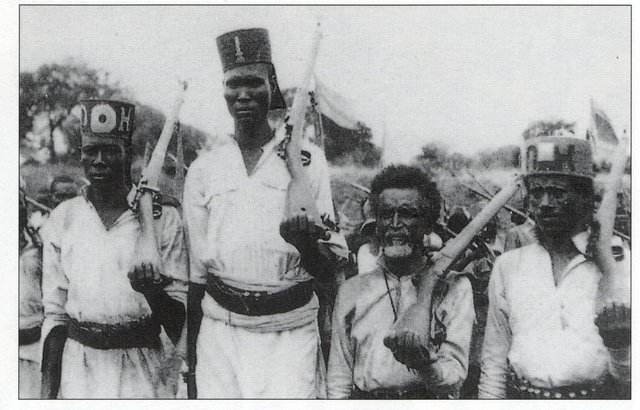
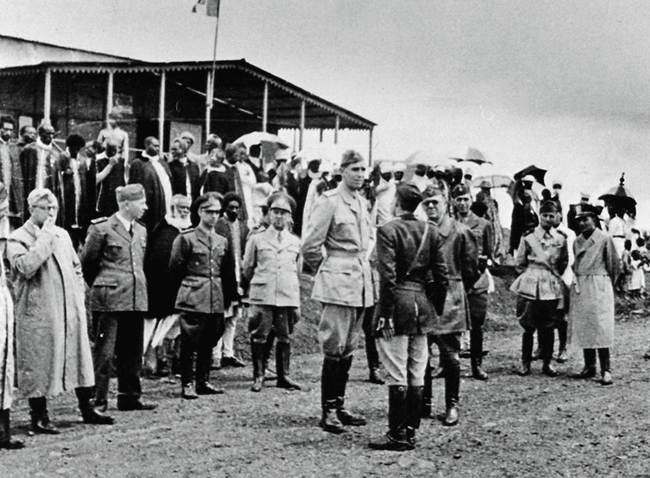


:max_bytes(150000):strip_icc()/GettyImages-129092127-5a6f6a5ac064710037f0efe9.jpg)
